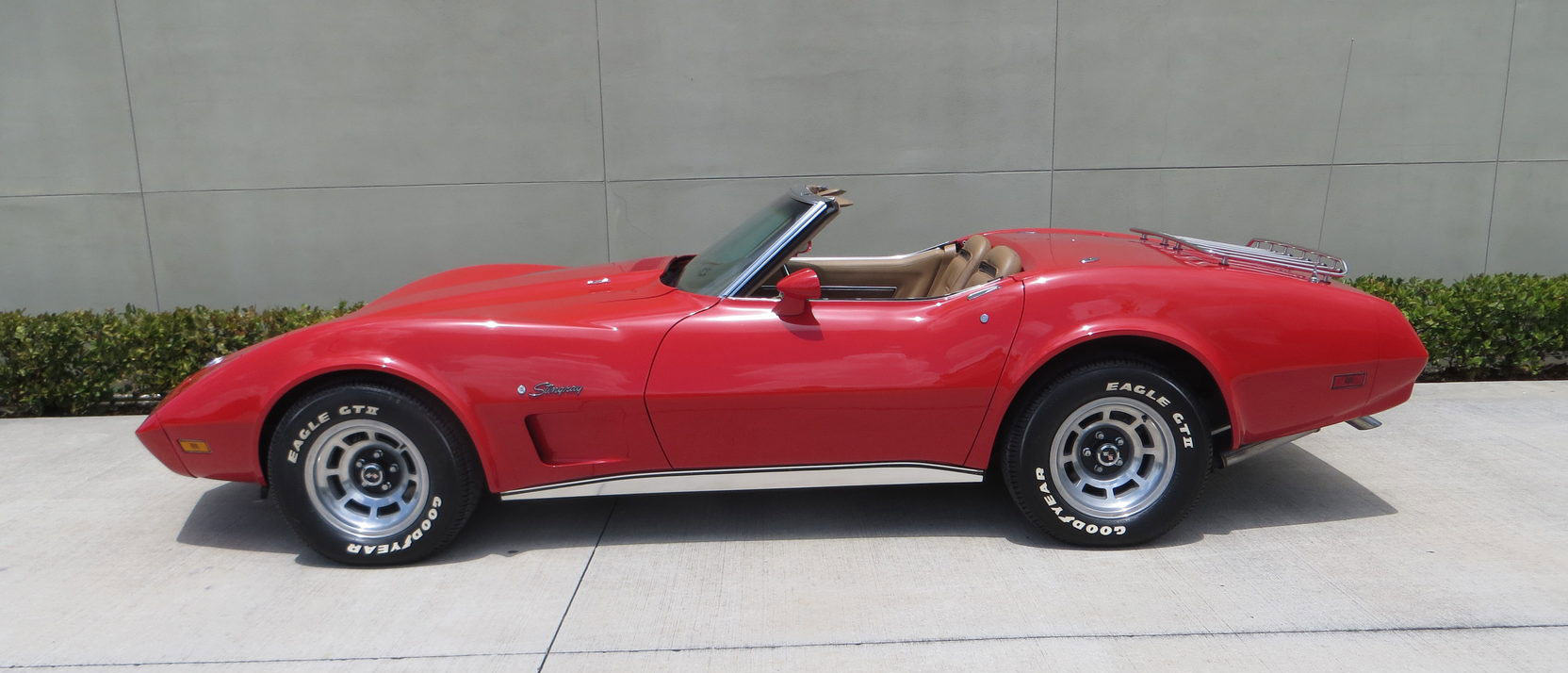Media | Articles
The last big block Corvettes are a bargain
Although Corvette performance and styling softened in the mid-1970s (and prices steadily rose), the period proved to be one of the most successful for Chevy’s sports car. It was also a time of goodbyes.
The “final” convertible left the factory in 1975, although the body style returned for 1986 in the C4 series. The year prior was the last that the Mk. IV V-8 (aka big-block or “Rat,” which debuted for 1965) was offered in the ’Vette. Was it a sad farewell?
The regular production option (RPO) LS-4 was a 454-cid engine rated at 270 net horsepower. Not among the quickest classic Corvettes, the LS-4 was still respectable for the day. Today, it’s the most affordable way to get a big-block ’Vette.
Upgrade parade
Although the plastic-covered bumpers on the 1974 Corvette somewhat diluted the aggressive stance of the C3 Stingray design that debuted for 1968, buyers liked it more than ever. Chevy, with Zora Arkus-Duntov at the helm of the Corvette program, kept a steady stream of improvements coming. The ’Vette didn’t get faster in the 1970s, but it gained more refined handling and comfort. For example, by 1974 approximately 80 percent of buyers were choosing optional air conditioning.
Most of the year’s 37,502 Corvette buyers were perfectly happy with the standard L-48 350 V-8, rated at 195 net hp and 275 lb.-ft. of torque. The L-82 350 performance option raised those numbers to 250 hp and 285 lb.-ft., and 6,700 buyers thought the upgrade was worth the additional $299. The 270-hp LS-4 454 V-8 was actually cheaper at $250, but just under 3,500 customers ordered it. The model year had opened with the oil embargo, and the resulting gas lines and price hikes took a toll.
Marketplace
Buy and sell classics with confidence
What big-block was this?
A 1974 big-block Corvette wears the same chrome “454” callouts on its hood as earlier models, but how good was this one? The LS-4 was a slightly milder version of the 1971-72 LS-5, and Chevy also offered it in full-size models and Chevelles with a lower output rating.
The LS-4’s specs were nothing special: oval-port cast-iron cylinder heads, two-bolt main bearing caps, cast-iron crankshaft, and forged steel connecting rods. The 8.25:1 compression was the same as the ’72 LS-5, as were the 2.06-inch intake and 1.72-inch exhaust valves and even the 270 net hp rating. (The 1970-71 LS-6 was an all-out performance engine, with much higher compression, solid-lifter cam, and larger rectangular ports and larger valves.)
Most of the differences had to do with emissions equipment: The LS-4’s cam was slightly milder, and it used the air injection reactor emissions system (AIR) in place of the LS-5’s controlled combustion system (CCS). There was no catalytic converter for 1974.
The LS-4’s calling card was torque. Its 380 lb.-ft. at 2,800 rpm was down slightly from the LS-5’s 390 lb.-ft. at 3,200 rpm. The L-82 350, by comparison, produced 285 lb.-ft. at 4,000 rpm, so it didn’t offer the same instant oomph as the larger engine.
Jim Jordan, president of County Corvette, a classic car dealership in West Chester, Pa., laments that the 1973-74 LS-4 was not a true high-performance powerplant like Pontiac’s 1973-74 455 Super Duty. He does, however, understand the ’74 model’s appeal.
“The ’74 Corvette is a car for everyone, from a first-time buyer with less than 10K to spend to a world-class collector looking to finish off a C3 big-block collection with a great example,” Jordan said. “There is a niche group of people that remember and like the trend to painted bumpers, making for a sleek look for the 1974 Corvette, particularly in great colors like red/red.”
Respectable rat
Car & Driver tested the LS-4 in a pair of 1973 ’Vettes, which were a bit lighter than the ’74s with their new plastic-covered rear bumper assembly. An automatic-equipped LS-4 ran the quarter-mile in 14.7 seconds at 97.2 mph / 3.08 axle ratio vs. 14.6 at 95.7 mph / 3.55 axle ratio for the 4-speed stick car. (In comparison, a heavier, 90-pound LS-5 automatic the magazine tested in 1971—also with a 3:08 rear axle ratio—did the deed in 14.2 at 100.3 mph.)
So don’t use the term “malaise” around a 1974 big-block Vette. Just take advantage of the lower price.


